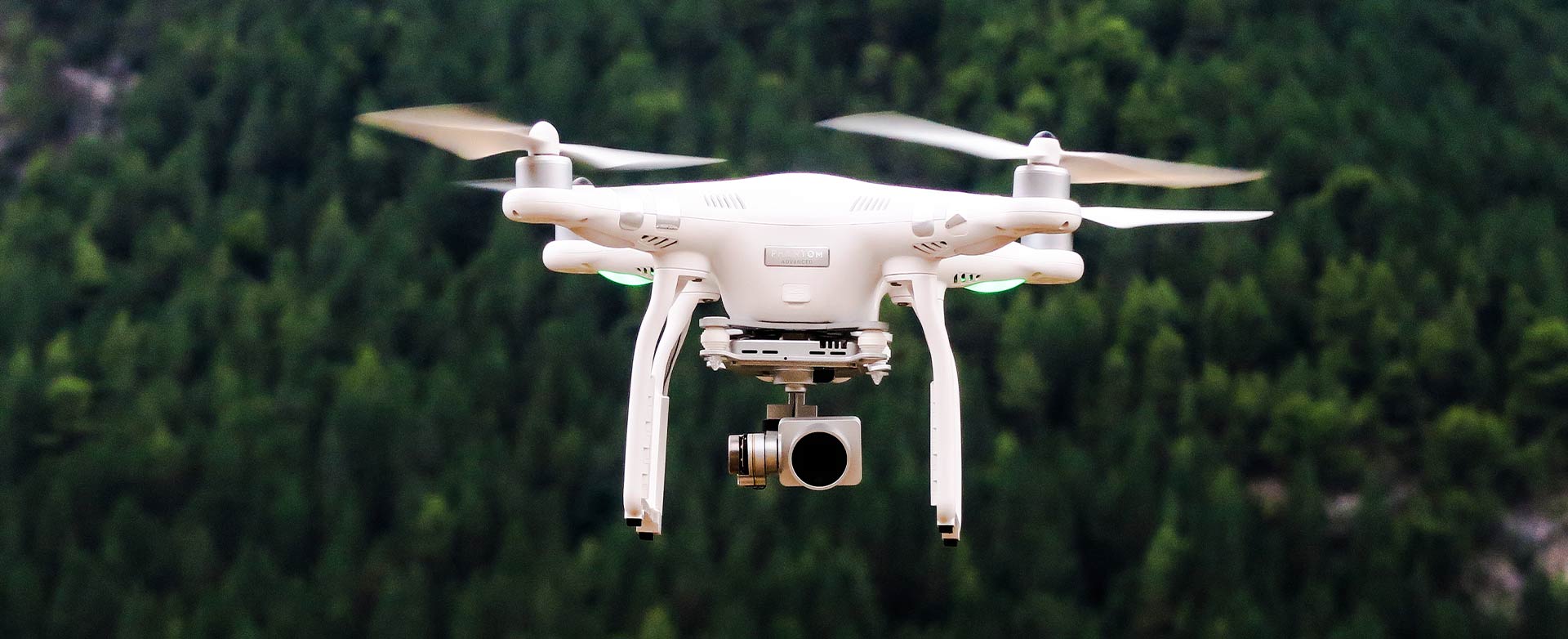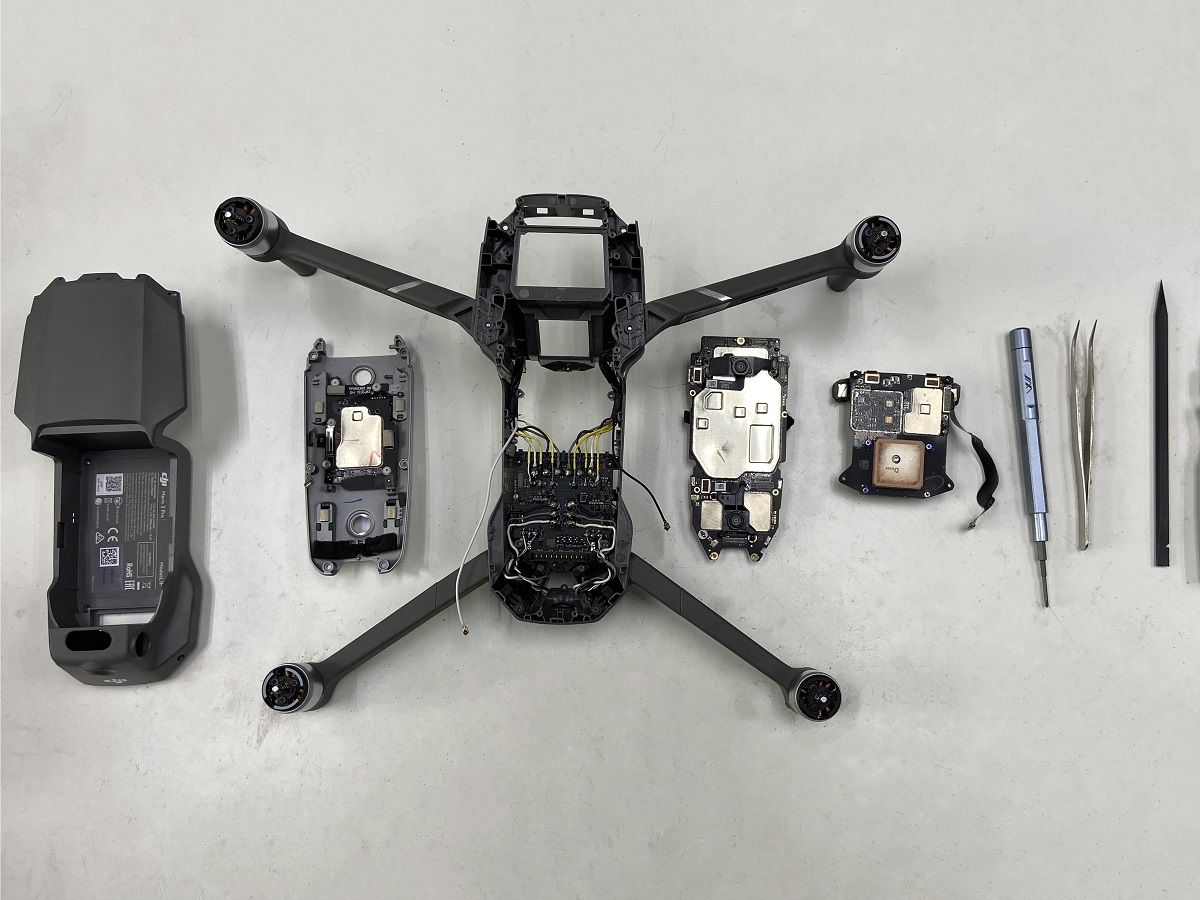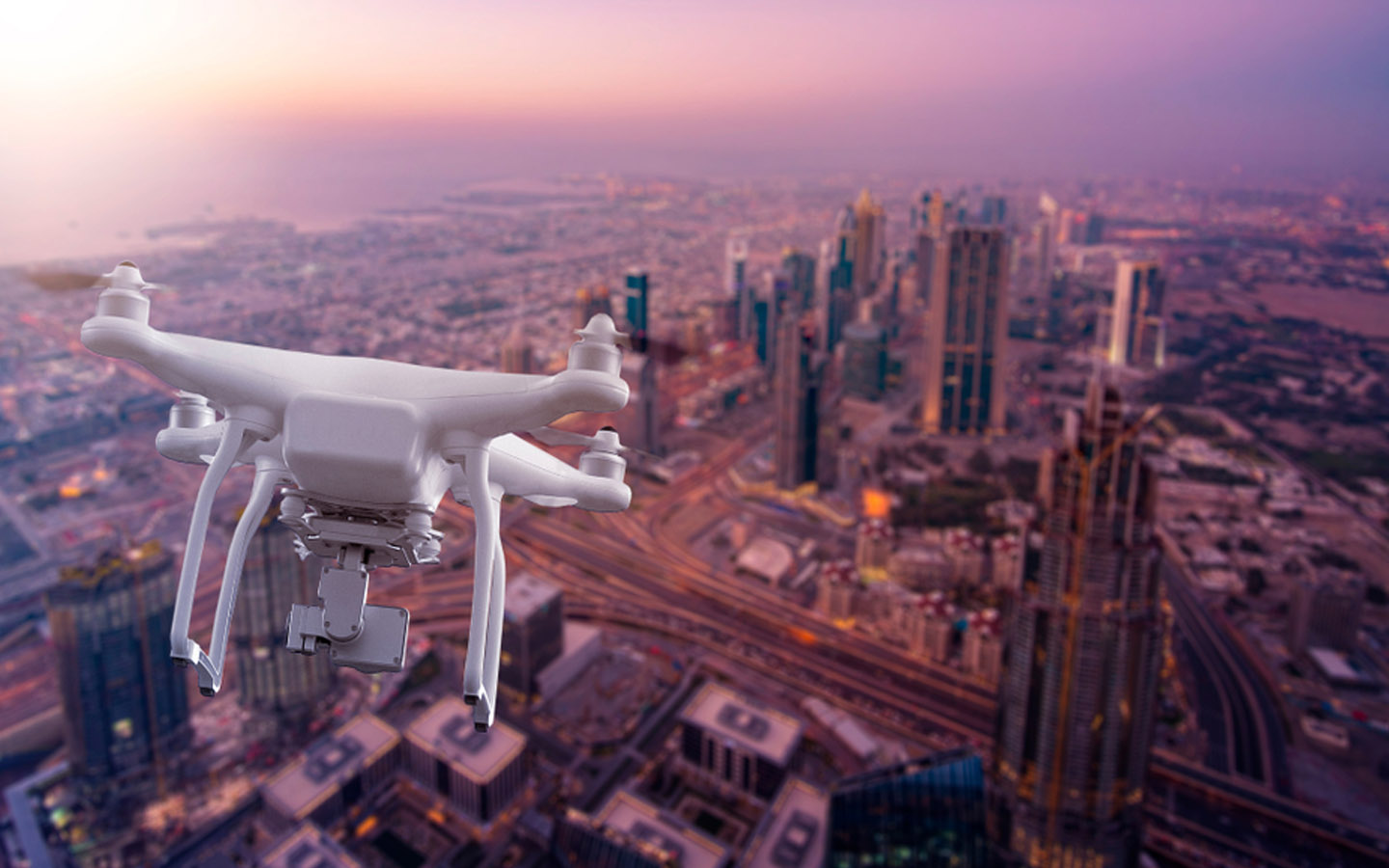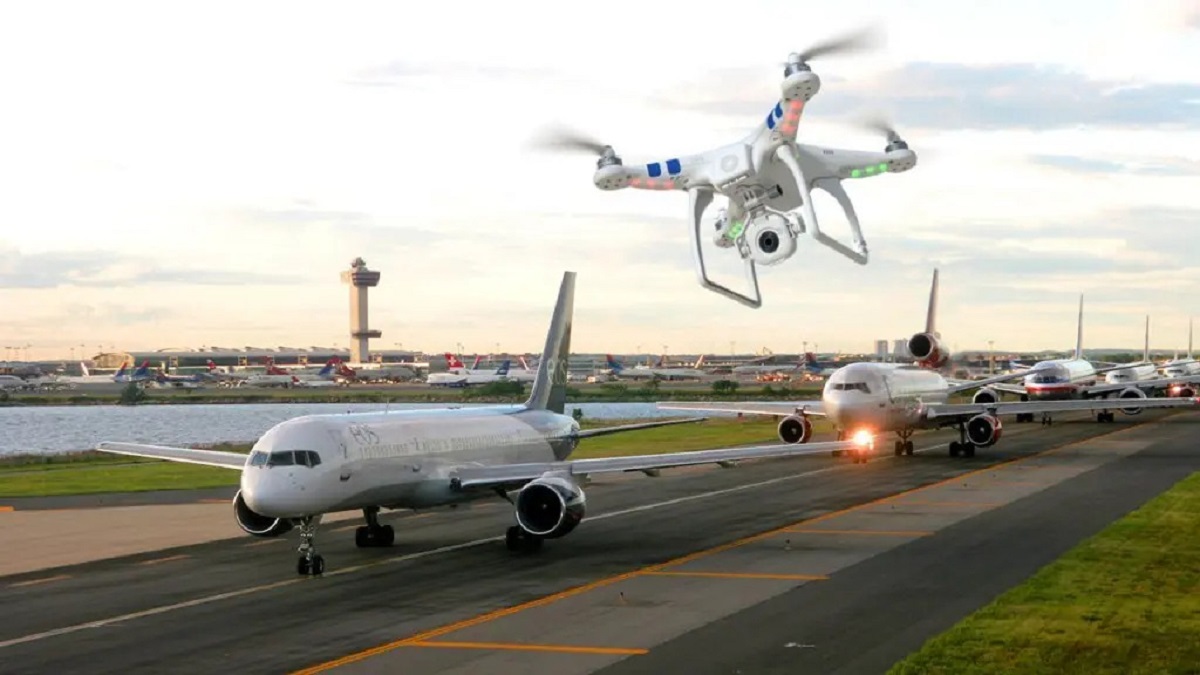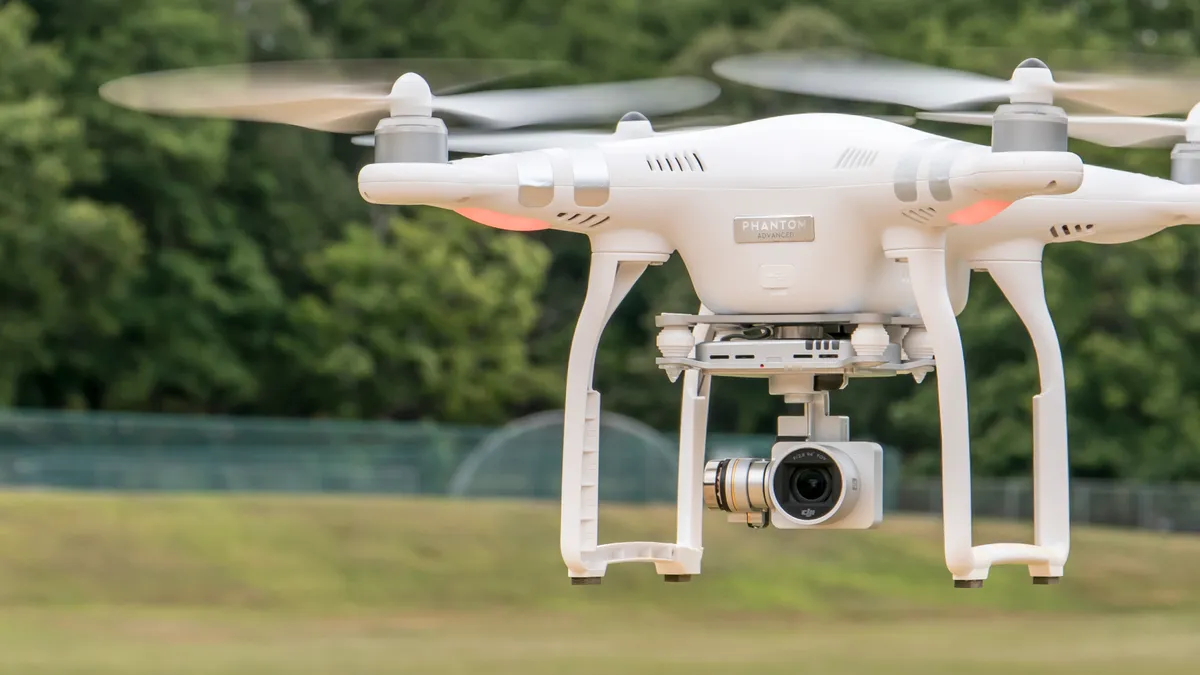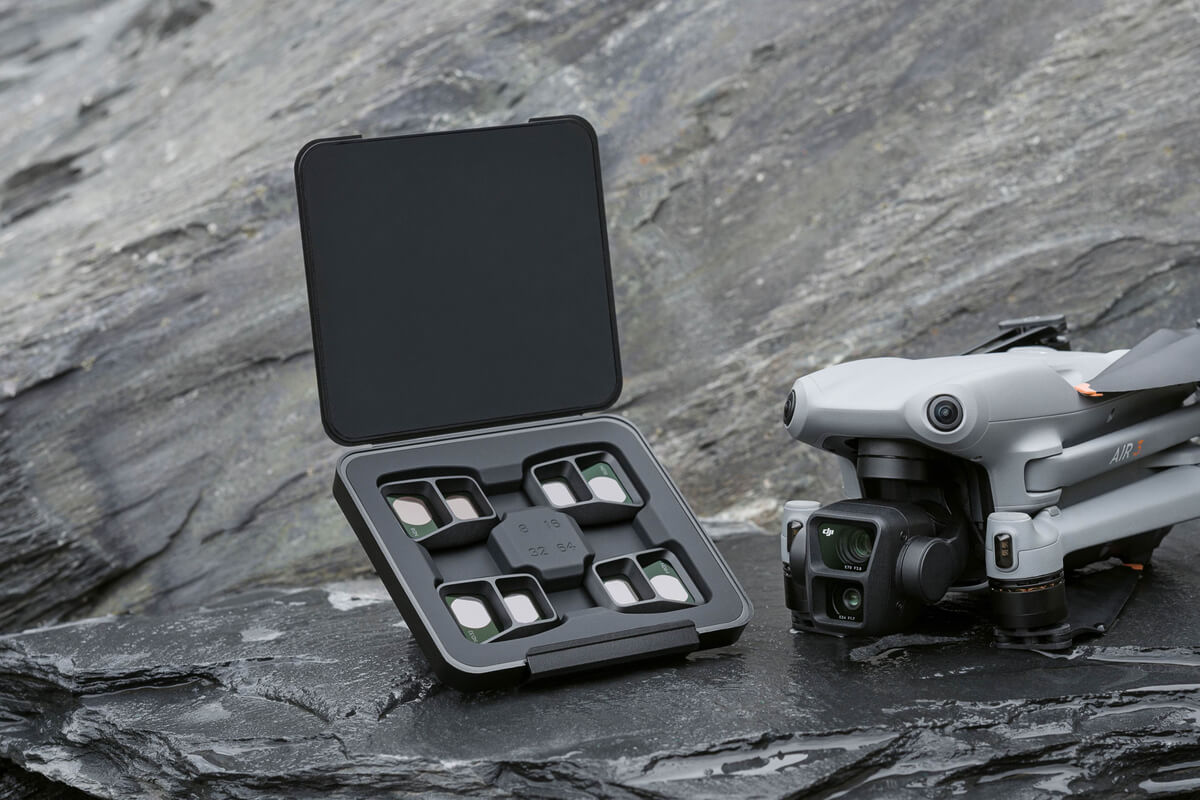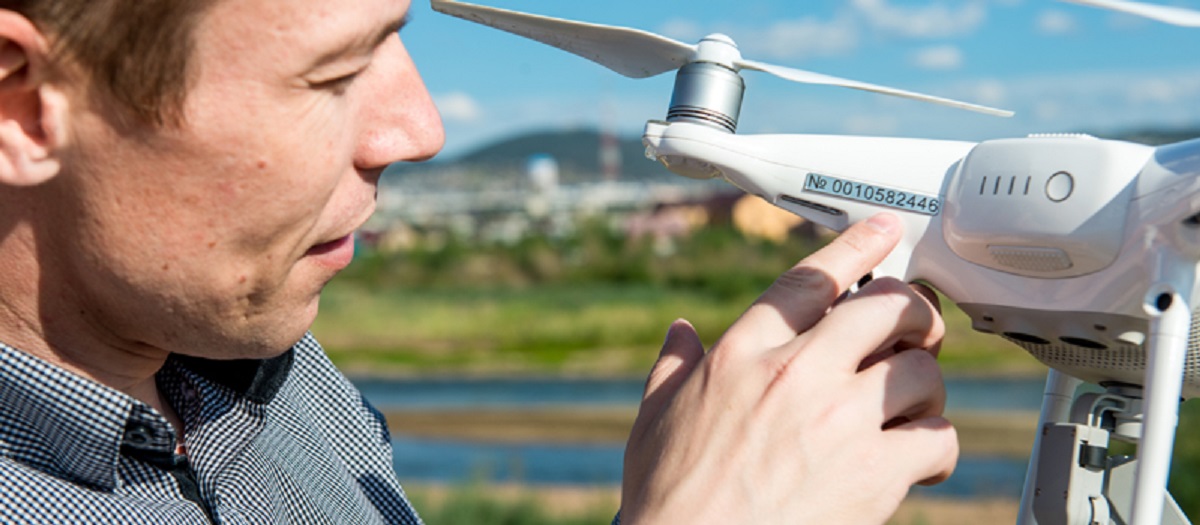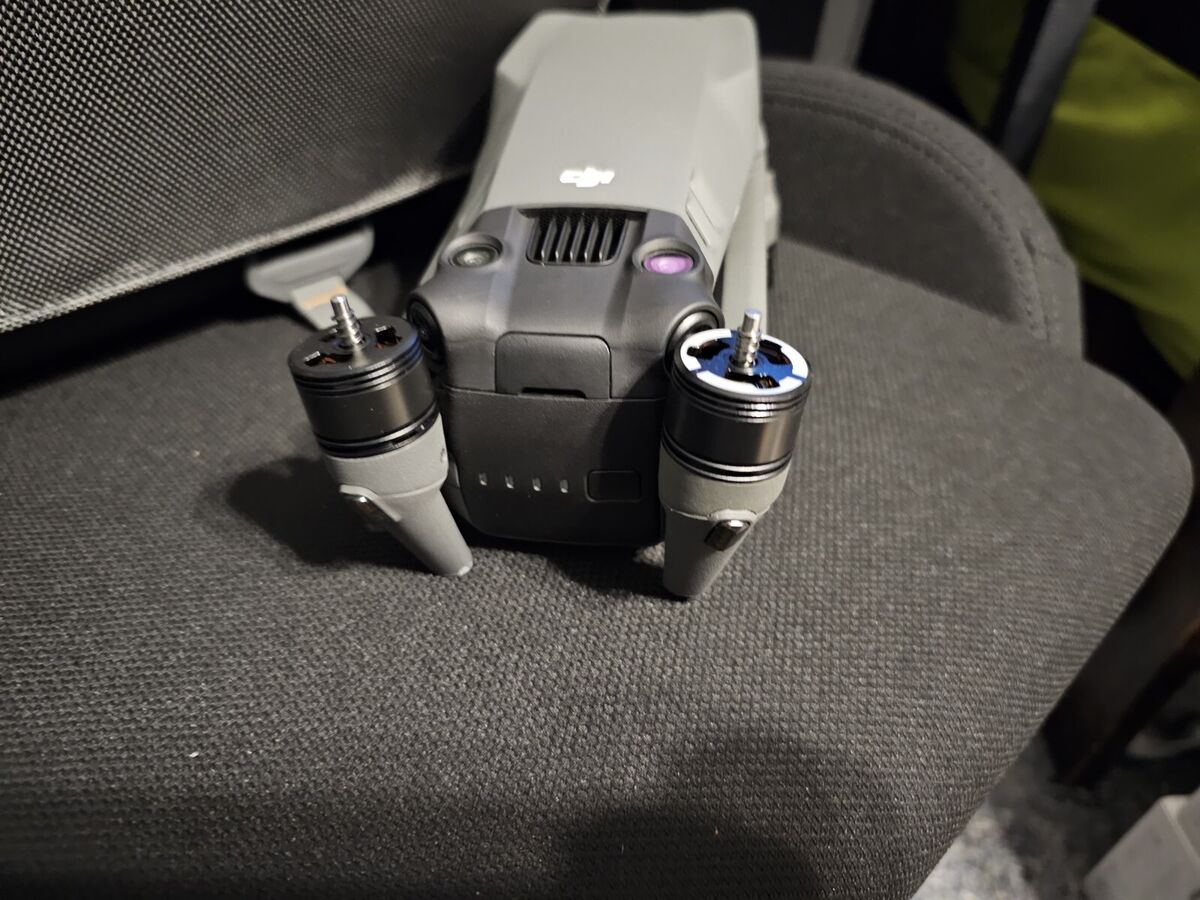Introduction
Welcome to the world of drones, where aerial photography and videography have become increasingly popular. However, as drone usage continues to soar, it is essential to understand the rules and regulations governing their operation. One crucial aspect of flying a drone legally and responsibly is obtaining drone authorization, also known as Part 107 authorization, from the Federal Aviation Administration (FAA) in the United States.
Drone authorization allows you to fly in restricted airspace, such as near airports or government facilities, and ensures that you are complying with the necessary guidelines. Securing authorization not only promotes safety but also prevents potential legal consequences that may arise from unauthorized drone operations.
While the process of obtaining drone authorization may seem daunting at first, it is relatively straightforward if you follow the necessary steps. In this article, we will guide you through each stage of the authorization process, from understanding the rules and regulations to obtaining the required documentation and finally receiving the green light to fly with authorization.
Whether you are an aspiring drone pilot or an experienced operator seeking to expand your flying capabilities, this comprehensive guide will provide you with the knowledge and tools you need to successfully navigate the drone authorization process. So, let’s dive in and explore how to get drone authorization step by step.
Understanding Drone Authorization
Before delving into the process of obtaining drone authorization, it is crucial to have a clear understanding of what it entails. Drone authorization refers to the permission granted by the FAA to operate a drone in specific airspace that is otherwise restricted. This authorization ensures that your drone flights adhere to safety protocols and comply with the regulations established by the FAA.
There are certain types of airspace where drones are prohibited or have restrictions on their operations. These areas include airports, military installations, national parks, and other government facilities. By obtaining drone authorization, you gain access to these restricted zones, allowing you to capture stunning aerial footage legally and responsibly.
It is essential to note that there are different types of drone authorizations available, depending on the specific airspace and requirements. The most common type of authorization is the Part 107 authorization, which applies to commercial drone operators. However, recreational drone pilots may also need authorization in certain situations, such as flying near airports.
Obtaining drone authorization not only ensures compliance with the law but also promotes safety for everyone involved. The FAA has implemented regulations to prevent drone-related incidents with manned aircraft and to protect the privacy and security of the public.
By obtaining authorization, you demonstrate your commitment to responsible drone operation. You are actively contributing to the safe integration of drones into the national airspace system. Flying with authorization not only protects yourself from legal repercussions but also helps to maintain a positive reputation for the drone community as a whole.
Now that you have a better understanding of what drone authorization entails, let’s move on to the step-by-step process of obtaining this essential permit. From familiarizing yourself with the rules and regulations to submitting your authorization request, we will guide you through each stage of the process to ensure a smooth and successful experience.
Step 1: Know the Rules and Regulations
Before you begin the process of obtaining drone authorization, it is crucial to familiarize yourself with the rules and regulations governing drone operations. The FAA has established specific guidelines to ensure the safe and responsible use of drones in the national airspace.
Start by reviewing the Part 107 regulations, which outline the requirements for commercial drone operations. These regulations cover various aspects, such as pilot certification, airspace restrictions, operational limitations, and safety guidelines. Understanding and complying with these regulations is essential for operating your drone legally.
In addition to Part 107, it is also important to be aware of any local or state laws that may pertain to drone operations. Some areas may have additional restrictions or requirements beyond what the FAA mandates. Research and familiarize yourself with these local regulations to avoid any unintentional violations during your drone flights.
Furthermore, it is crucial to stay updated on any changes or updates to the FAA regulations. The rules and requirements may evolve over time, so it is essential to stay informed to ensure compliance with the latest guidelines.
Additionally, understanding the limitations regarding airspace is vital. Different airspace classifications exist, each with its own set of rules and restrictions. Familiarize yourself with the different classifications, such as controlled airspace, restricted airspace, and prohibited airspace. This knowledge will help you determine whether you need drone authorization for a specific location and what steps to follow to fly legally in those areas.
Finally, it is important to consider privacy and safety concerns when operating a drone. Respect the privacy of individuals and avoid flying your drone in a manner that may compromise their personal space. Additionally, ensure that you conduct your flights in a safe and responsible manner, taking into account weather conditions, surrounding obstacles, and the potential impact on bystanders.
By knowing and adhering to the rules and regulations governing drone operations, you lay the foundation for a successful and responsible flight experience. Understanding the guidelines not only ensures compliance with the law but also promotes safety and fosters a positive perception of drone use among the public.
Step 2: Register Your Drone
Once you have familiarized yourself with the rules and regulations, the next step in obtaining drone authorization is to register your drone with the FAA. In the United States, all drones weighing over 0.55 pounds (250 grams) must be registered with the FAA before they can be flown legally.
Registering your drone is a straightforward process that can be done online through the FAA’s official DroneZone website. You will need to provide basic information about yourself as the owner and operator of the drone, as well as details about the drone itself, such as its make, model, and serial number.
It is important to note that there is a registration fee associated with the process. At the time of writing, the fee is $5 for a three-year registration period. Once your registration is complete, you will receive a unique registration number that must be prominently displayed on your drone.
Registering your drone not only ensures compliance with the FAA regulations but also provides a means of identification in case your drone gets lost or involved in an incident. It also helps authorities track and investigate any misuse of drones, promoting accountability among drone operators.
It is essential to keep in mind that registration is required for recreational drones as well as commercial drones. Regardless of your intended use, registering your drone is a legal requirement that must be fulfilled before you can proceed with obtaining drone authorization.
After successfully registering your drone, make sure to keep your registration certificate accessible during your drone flights. Having the registration readily available will demonstrate your compliance with the law and facilitate any required inspections or inquiries.
By completing the registration process, you take another step toward legally operating your drone. With your drone now registered, you can move on to the next stages of obtaining drone authorization, which involve obtaining the necessary certifications and permissions to fly in restricted airspace.
Step 3: Obtain a Remote Pilot Certificate
In order to operate a drone for commercial purposes in the United States, you must obtain a Remote Pilot Certificate issued by the Federal Aviation Administration (FAA). This certification demonstrates your knowledge and understanding of drone operations, safety precautions, and airspace regulations.
The first step in obtaining a Remote Pilot Certificate is to pass the FAA’s Part 107 exam. This exam covers various topics related to drone operations, including airspace classification, weather conditions, emergency procedures, and flight restrictions. It is essential to thoroughly study and prepare for the exam to ensure success.
To study for the exam, the FAA provides a comprehensive study guide called the Remote Pilot – Small Unmanned Aircraft Systems (sUAS) Study Guide. This guide contains all the necessary information to help you prepare for the exam and covers topics such as regulations, airspace, and operational procedures.
Once you feel adequately prepared, you can schedule an appointment to take the Part 107 exam at an approved FAA testing center. The exam consists of multiple-choice questions and requires a passing score of 70% or higher. Upon passing the exam, you will receive a temporary certificate while you wait for your official Remote Pilot Certificate to arrive in the mail.
It is important to note that the Remote Pilot Certificate is valid for two years. To maintain your certification, you will need to renew it by either passing a recurrent knowledge test or completing a recurrent training course.
Obtaining a Remote Pilot Certificate not only demonstrates your commitment to safe and responsible drone operations, but it also opens up a world of opportunities for commercial drone flights. With this certification, you can legally perform aerial photography, videography, surveying, and other commercial drone services.
Even if you are operating a drone for recreational purposes and do not require a Remote Pilot Certificate, it is still highly recommended to study the Part 107 material. The knowledge gained from studying for the exam will enhance your understanding of airspace regulations and safety practices, making you a more informed and conscientious drone operator.
By obtaining a Remote Pilot Certificate, you are taking a significant step towards obtaining drone authorization and operating your drone legally and professionally. With this certification in hand, you can proceed to the next steps of the authorization process confidently.
Step 4: Apply for Drone Authorization
Once you have registered your drone and obtained your Remote Pilot Certificate, it’s time to apply for drone authorization from the Federal Aviation Administration (FAA). This step is crucial if you want to fly in restricted airspace or perform certain commercial operations with your drone.
The FAA has implemented an online system called the DroneZone, which facilitates the application process for drone authorization. To apply, you will need to log in to your DroneZone account and access the “Authorization” section. Here, you will find the necessary forms and instructions to submit your request for drone authorization.
When filling out the authorization request form, provide detailed information about your intended flight operations. This includes the location, date, and duration of the flight, as well as the purpose and specific requirements for your operation. Being specific and detailed in your application increases the chances of receiving the desired authorization.
Keep in mind that there are different types of authorizations available based on the nature of your flight operations. For example, if you want to fly your drone in controlled airspace near an airport, you may need to apply for a Part 107 airspace authorization. On the other hand, if you wish to operate your drone for certain specialized activities, such as night-time operations or flights over people, you will need to apply for specific waivers.
It is important to plan ahead and submit your authorization request well in advance of your intended flight date. The FAA recommends submitting your request at least 90 days in advance for complex or high-profile operations to allow ample time for review and processing.
Once you have completed the authorization request form, review it carefully to ensure accuracy and completeness. Submit your application through the DroneZone system, and keep a record of the submission confirmation for future reference.
After submitting your request for drone authorization, you will need to wait for the FAA’s review and response. The processing time may vary depending on the complexity of your request and current workload. During this waiting period, it is important to refrain from conducting the flight operations until you have received the necessary authorization.
By applying for drone authorization, you are demonstrating your commitment to responsible drone use and compliance with the FAA regulations. This step paves the way for obtaining official permission to operate your drone in restricted airspace or perform specialized operations, expanding your capabilities as a drone pilot.
Step 5: Gather Required Documentation
Once you have submitted your request for drone authorization, the next step is to gather the required documentation to support your application. The Federal Aviation Administration (FAA) may require additional information to assess the safety and feasibility of your proposed flight operations.
The specific documentation needed may vary depending on the type of authorization you are seeking and the nature of your flight operations. However, there are some common documents that are often required to support any authorization request:
- Flight Plan: Provide a detailed flight plan that outlines the specific flight path, altitude, and duration of your intended operations.
- Risk Assessment: Conduct a thorough risk assessment of your proposed operations and document any potential hazards or risks associated with the flight.
- Insurance: Depending on the type of operation and location, the FAA may require proof of liability insurance coverage to protect against any potential damages or accidents.
- Operational Manual: If you are operating as a commercial drone pilot, you may be required to provide an operational manual that outlines your standard operating procedures, safety protocols, and emergency response plans.
- Certificates and Licenses: Include copies of your Remote Pilot Certificate, drone registration certificate, and any other relevant licenses or certifications that demonstrate your qualifications and compliance with FAA regulations.
- Proposed Flight Operations Summary: Summarize the purpose of your flight operations, including any specific objectives, deliverables, or data collection requirements.
It is crucial to carefully review the FAA’s specific requirements for the type of authorization you are seeking. The FAA may provide guidelines or checklists outlining the necessary documentation. Adhering to these requirements will ensure that your application is complete and increases the chances of obtaining the desired authorization.
Keep in mind that the required documentation should be organized and easily accessible. Label and categorize the documents to streamline the review process and facilitate communication with the FAA if they have any questions or need clarifications.
Prioritize accuracy and attention to detail when compiling your documentation. Any discrepancies or incomplete information may cause delays or potential rejections of your application.
By gathering the required documentation, you demonstrate your preparedness and commitment to complying with the necessary regulations. Providing thorough and well-documented information strengthens your case for receiving drone authorization from the FAA.
Step 6: Submit Authorization Request
After gathering all the necessary documentation, the next step in obtaining drone authorization is to submit your authorization request to the Federal Aviation Administration (FAA). This crucial step involves providing all the required information and materials to support your application.
Before submitting your request, it is important to review and double-check all the documentation you have gathered. Ensure that all the required forms are completed accurately, and all supporting materials are included. Thoroughly review your flight plan, risk assessment, insurance documents, operational manual, and any other required information to ensure they are in line with the FAA’s guidelines.
When submitting your authorization request, follow the instructions provided by the FAA. The application process is typically conducted online through the FAA’s DroneZone portal. Log in to your DroneZone account and navigate to the “Authorization” section to access the application forms and submission portal.
Upload all the necessary documents and forms as per the instructions provided. Ensure that the filenames are clear and easily identifiable. Properly organizing your files will help streamline the review process and ensure that no documents are missing or overlooked.
If there are any specific questions or prompts in the application form, answer them thoroughly and accurately. Provide clear and concise explanations for each question, ensuring that there are no ambiguities or gaps in the information provided. The more detailed and well-prepared your application, the higher the chances of receiving the desired authorization.
Once you have uploaded all the required documents, carefully review your application before submitting it. Double-check that all the information is accurate, and that there are no missing or incomplete sections. Pay attention to any disclaimers or notifications provided by the FAA regarding the application process.
Once you have confirmed the completeness and accuracy of your application, submit it through the DroneZone portal. Keep a record of the submission confirmation for future reference, as well as for any potential follow-up communication with the FAA.
After submitting your authorization request, you will need to await the FAA’s review and response. The processing time may vary depending on the complexity of your request and the current workload of the FAA. During this waiting period, it is important to exercise patience and refrain from conducting any flight operations that require the authorization you are seeking.
By submitting your authorization request, you are taking a significant step towards obtaining official permission to operate your drone in limited or restricted airspace. Ensure that your application is complete, accurate, and well-prepared to maximize your chances of receiving the desired drone authorization from the FAA.
Step 7: Await Response and Review Additional Requirements
After submitting your drone authorization request to the Federal Aviation Administration (FAA), you will need to patiently await their response. The processing time may vary depending on the complexity of your request and the current workload of the FAA. During this waiting period, it is important to refrain from conducting any flight operations that require the authorization you are seeking.
While awaiting the FAA’s response, it is crucial to regularly monitor your communication channels for any updates or additional requirements. The FAA may reach out to you for clarification, request further documentation, or provide additional instructions based on the specifics of your application.
Be sure to check your email inbox regularly, including any spam or junk folders, for any correspondence from the FAA. Also, log in to your DroneZone account periodically to check for any notifications or messages related to your application.
If the FAA requests additional information or documentation, promptly provide the requested material. It is essential to respond to any FAA inquiries within the specified time frame to avoid delays or potential rejection of your authorization request.
During the review process, it is important to be patient and maintain open lines of communication with the FAA. If you have any questions or concerns, do not hesitate to reach out to the appropriate FAA representatives for clarification.
While waiting for the FAA’s response, you may want to utilize this time to further enhance your knowledge and skills as a drone pilot. Consider taking advanced training courses, staying updated on the latest regulations and industry developments, and practicing your flight skills in compliance with the FAA guidelines.
Remember, obtaining drone authorization is not just about receiving a “yes” or “no” response. It is about demonstrating your commitment to safe and responsible drone operations, complying with regulations, and contributing to the overall safety and positive reputation of the drone industry.
By awaiting the FAA’s response and being proactive in reviewing and addressing any additional requirements, you are actively participating in the authorization process. Stay alert, vigilant, and responsive to ensure a successful outcome for your drone authorization request.
Step 8: Comply with Any Additional Requirements
After receiving a response from the Federal Aviation Administration (FAA) regarding your drone authorization request, it is important to carefully review any additional requirements or conditions outlined in their communication. These requirements may be related to your flight operations, safety protocols, or specific limitations that need to be followed to maintain compliance with the authorization.
Take the time to thoroughly understand and comprehend the additional requirements provided by the FAA. Read through the instructions and guidelines carefully to ensure that you are aware of any restrictions or obligations associated with the authorized operations.
If the FAA has requested any modifications or adjustments to your flight plan, risk assessment, or any other aspect of your authorization, make sure to address these promptly and appropriately. Modify your plans as instructed by the FAA to ensure compliance while operating within the authorized parameters.
Ensure that you have the necessary equipment, resources, and procedures in place to comply with the additional requirements. This may include having specific safety measures, such as emergency response plans or backup equipment, depending on the nature of your authorized operations.
If the FAA has outlined any reporting or inspection requirements, be diligent in fulfilling these obligations. Maintain accurate records, document your flight activities, and promptly report any incidents or issues as required by the FAA. Keeping detailed and up-to-date records will not only help you maintain compliance but will also provide valuable information for future reference.
It is crucial to maintain open lines of communication with the FAA throughout the process and during the operational phase. If you have any questions or concerns regarding the additional requirements or if any issues arise during your authorized flights, reach out to the FAA for guidance and clarification. Staying in touch and seeking guidance when needed will help ensure a smooth and successful drone operation.
Remember that compliance with any additional requirements is essential to maintain the validity of your drone authorization. Failure to comply may result in revocation of the authorization or other potential consequences. It is your responsibility as a drone operator to adhere to the rules and regulations set by the FAA and to fulfill any additional requirements outlined in your authorization.
By complying with any additional requirements set forth by the FAA, you demonstrate your commitment to safe and responsible drone operations. Adhering to these requirements not only ensures compliance but also helps maintain a positive and professional image for the drone community as a whole.
Step 9: Fly with Authorization
After successfully obtaining drone authorization from the Federal Aviation Administration (FAA) and ensuring compliance with any additional requirements, you are now ready to take to the skies and fly with authorization. This is an exciting milestone that allows you to explore new opportunities and capture stunning aerial content legally and responsibly.
Before you embark on your authorized flight operations, it is essential to review and familiarize yourself with the details of your authorization. Understand the specific limitations, requirements, and any applicable airspace restrictions that may be outlined in your authorization documents or communication from the FAA.
Be sure to also revisit your flight plan and any modifications or adjustments made during the authorization process. Ensure that you have a clear understanding of the approved flight path, altitude restrictions, and any designated areas or points of interest specified by the FAA.
Prior to each flight, conduct a thorough pre-flight inspection of your drone and equipment. Verify that all systems are functioning correctly, and all batteries are fully charged. It is crucial to prioritize safety and be prepared for any unforeseen circumstances that may arise during your flight operations.
During your flights, follow the guidelines and limitations specified in your authorization. Adhere to the safety protocols and operational procedures outlined by the FAA. Respect any airspace restrictions and do not deviate from the approved flight path or altitude without obtaining proper authorization or clearance.
Maintain situational awareness throughout your flights and constantly monitor the drone and surrounding airspace for any potential hazards or obstacles. Stay mindful of any changes in weather conditions, airspace congestion, or other factors that could impact your flight safety.
If you encounter any issues or experience deviations from your planned flight operations, promptly report them to the FAA as required. Comply with any reporting obligations outlined in your authorization. Open lines of communication and transparency with the FAA will help ensure a safe and successful flight experience.
Remember to also respect the privacy of individuals and property during your flight operations. Avoid capturing, broadcasting, or transmitting any imagery that may infringe upon privacy rights without proper consent or authorization.
By flying with authorization, you demonstrate your commitment to operating your drone legally, responsibly, and safely. Enjoy the opportunities that your authorization provides, and capture breathtaking visuals while maintaining compliance with the FAA regulations and guidelines.
Conclusion
Obtaining drone authorization is a crucial step for any drone pilot looking to operate their drone legally and responsibly. Throughout this comprehensive guide, we have walked you through the step-by-step process of obtaining drone authorization from the Federal Aviation Administration (FAA).
From understanding the rules and regulations to registering your drone, obtaining a Remote Pilot Certificate, and submitting your authorization request, each step plays a vital role in the successful acquisition of drone authorization. By following these steps, you demonstrate your commitment to safe and responsible drone operations.
We emphasized the importance of familiarizing yourself with the rules and regulations governing drone operations. Understanding airspace classifications, local regulations, and privacy concerns is crucial for complying with the law and ensuring the safety of your flights.
We also highlighted the significance of registering your drone with the FAA and obtaining a Remote Pilot Certificate. These steps validate your status as a responsible drone operator and open up opportunities for commercial drone operations.
Throughout the process, we stressed the importance of gathering and submitting the required documentation, including a comprehensive flight plan, risk assessment, and any additional documents requested by the FAA. Accurate and organized documentation increases the chances of a successful authorization request.
Awaiting the FAA’s response and complying with any additional requirements are essential steps in the authorization process. Maintaining open lines of communication with the FAA and promptly addressing any inquiries or modifications ensure a smooth and efficient path towards obtaining drone authorization.
Finally, once you have received your drone authorization, you are ready to fly legally and responsibly. Adhere to the approved flight plan, safety protocols, and any limitations specified by the FAA. Prioritize safety, respect others’ privacy, and enjoy the privileges that come with flying with authorization.
Remember, the process of obtaining drone authorization may require time, patience, and thorough preparation. However, the benefits of operating your drone legally and responsibly outweigh the effort invested in obtaining authorization.
By obtaining drone authorization, you demonstrate your commitment to professionalism, safety, and compliance with the FAA rules and regulations. Fly with confidence, capture breathtaking aerial footage, and contribute to the positive reputation of the drone community.
Now, armed with the knowledge and understanding of the authorization process, it’s time to take your drone operations to new heights by obtaining the necessary drone authorization!







